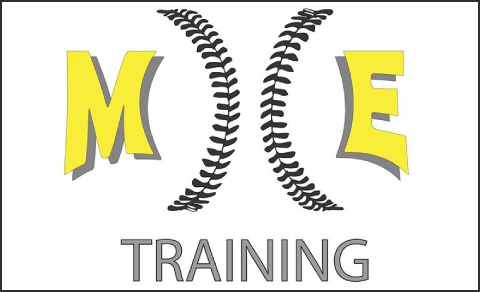(Disclaimer: Infiniti Performance is a sponsor of aXcess Baseball)
By: Derek Squires, CSCS –Performance Coach/Infiniti Performance
Main Points:
- in just three months, while playing a sport, you can lose more than 50% of your off-season strength and power gains
- in-season strength training prevents this loss of strength and power
- the volume of intense training reduces and recovery time increases during in-season training sessions
- more focus is placed on rebalancing the muscular imbalances created by the unilateral movements of baseball during an in-season training program
- professional and college athletes train throughout their seasons, why are you any different?
As the high school baseball season comes marching in, we receive many questions from parents, players, and coaches with a large degree of unfamiliarity regarding in-season training programs. Here are two of the most common misconceptions we hear regarding the continuation of training in-season:
1) “Lifting weights during the season will make me sore for games.”
2) “Training in-season will hinder my performance and make me tired.”
The goal for this article is to address these misconceptions associated with in-season training for baseball players. Before we do that, we must discuss what de-training is and the effects it can have on your health and performance.
De-training is the physical effects on your body when you stop any training program that you were previously engaged in. If you have been putting in 2-4 training sessions per week for the last four months, your body has become adjusted to this routine. Research focused on the effects of de-training (or the cessation of regular training) has shown that even athletes who have trained intensely and have been in peak shape for a very long time can experience over a 50% loss of their gains in only three months. If we do the math, the 12-week high school season will leave us lacking for what are probably the most critical games of the regular season, not to mention post-season. Also, the athlete will be entering the showcase season of June & July having preserved a minimal amount of his off-season gains! In addition, young athletes tend to lose more strength at faster rates than adults. For our high-school athletes this becomes particularly detrimental as college coaches will be assessing your skills when you are at significantly less than peak performance.
First, let’s address the concern of soreness. The baseball off-season typically spans between the end of October through the beginning of March, roughly four months. If you have been properly preparing yourself for the season, your body will have adapted to the demands of rigorous strength and performance training. A lot of the performance inhibiting soreness that can occur at the beginning of a new training program should be a thing of the past by now. On the contrary, an in-season strength and recovery program should have a restorative effect on the body’s energy and musculoskeletal systems. At this point, you have invested many hours into your training and skill development. That is some serious dedication and a huge sacrifice of your time and these increases in physical performance need to be maintained. You owe that to yourself!
Regarding the concern about the effects of in-season training and performance, it should be understood that the number one goal of any sports performance training program should be to enhance performance, period. This simple fact is the major difference between sports specific training and general fitness programs. With this goal in mind, an in-season training program is significantly different from an off-season training program in three major ways in order to prevent detrimental effects on performance.
First, the format of a training session is different in-season. The actual time spent working on strength and power exercises reduces from 60 minutes to approximately 35-40 minutes (depending on the athlete and the pace at which they work). This time frame is shorter than what the experienced athlete is accustomed to and is enough to maintain the strength and power gains they have worked for. The decreased work load will prevent “over-doing” it. In addition to the decreased volume of exercise, we no longer push our athlete’s to build their “work capacity,” or simply, their conditioning. Instead, we promote increased recovery times between sets. We will address the remaining 20-25 minutes of a typical in-season session later in this article.
Second, there is a significant decrease or complete elimination of sports specific exercises being performed in-season. From now until the first game of the season, we are in what is considered the “pre-season.” This means that the amount of sports specific training is at its peak as our athletes and other athletes alike are getting their skills ready to compete. Once the season officially begins, due to this high volume of sport specific movement, there is zero reason to continue these movements in the gym. Players are getting plenty of repetitions of their rotation movements and their speed training at practice and in their games. Duplicating these movements in the gym is asking for an overuse injury. As a result, we spend most of our lifting time performing bilateral exercises (when both sides of the body working together, i.e. a barbell deadlift, or tire flip). The only reason to perform unilateral exercises in-season would be to maintain strength in an athlete’s non-dominant side. For example, we may do rotational core exercises with our right-handed clients where they rotate left to right because hitting and throwing demands that they rotate right to left. In summary, overuse of already exerted muscles is avoided and speed/agility training is largely suspended.
Third, there is a significant increase in the amount of soft tissue regeneration and mobility exercises. This focus accounts for the remaining 20-25 minutes in your training session when we are able to address the mobility deficits and restrictions induced by baseball’s extreme one-sidedness. For pitchers, this means rebalancing and restoring range of motion in the shoulder, thoracic spine, and the hips. For position players, this means making sure the countless swings aren’t creating an imbalance in your core musculature or the rest of your body.
For example, throwing a baseball places extreme loads on the musculature of a person’s body. When a pitcher goes from maximum external rotation (the laying back of the forearm behind their body) to maximum internal rotation (after ball release when the arm is extended towards the target) the posterior musculature of their throwing side undergoes a very violent lengthening action (known as eccentric loading) and the anterior musculature undergoes a very violent shortening action (known as concentric loading). Many starter’s throw close to 100 pitches in a game and each pitch can place between 400-600N of compressive force on their shoulder (this equates to roughly 90 pounds per pitch and 9,000 pounds over the course of a game). It is of paramount importance, therefore, that there is a major focus on the recovery and regeneration of the player’s soft tissues. Additionally, the use of these soft tissue techniques stimulates the body’s parasympathetic nervous system. When in competition, like a game or practice session, the body releases stress hormones in order to improve focus and performance. This is your “fight or flight” state, or sympathetic nervous system. Recovery techniques we implement with our athletes do the opposite, they stimulate the relaxation hormones your body needs to speed up its recovery. (There is a lot more to the recovery process of a competitive athlete, but that information will be focused on in a later article)
Hopefully it is now clear how vital a strength training program is to your future success this year. The final point I want to make for you is this: nearly every professional and college baseball team in the country requires that their players maintain strength training during the season. In fact, it is safe to say that professional players need to train or their bodies will simply break down from all of the playing and traveling they do during their season. All of our professional athletes that train with us in the off-season attribute much of their ability to stay healthy and feel great at the end of the season to both their work in the off-season and their continued dedication and commitment to training during the season. If these prime examples of elite athleticism recognize and embrace the necessity for in-season training, and you strive to become a collegiate or professional baseball player, shouldn’t you follow their example?
As a result of our approach to in-season training, a player has no reason to discontinue strength training during their high school season. In fact, it is imperative that they MUST continue their training if they want to finish the season as strong and as powerful as they began it. We like to tell our athlete’s during their training sessions that finishing strong is a choice. The same rule applies to your long-term success on the baseball diamond. Make the right choice!










